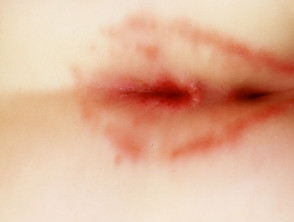What is perianal streptococcal dermatitis?
Perianal streptococcal dermatitis is a bacterial infection of the skin around the anus in children.
Who gets perianal streptococcal dermatitis?
Perianal streptococcal dermatitis affects children, usually in the age range of 6 months to 10 years, with a male predominance (4:1). Adults can be affected.
Perianal streptococcal dermatitis can be associated with an episode of streptococcal tonsillitis, and is mainly seen in winter.
What is the cause of perianal streptococcal dermatitis?
Perianal streptococcal dermatitis is caused by streptococcal bacteria of the group A beta-haemolytic (GAS) type.
The same bacterium may be carried in the throat of the patient or carer and inoculation from the nasopharynx to the perianal area when wiping is thought to be common.
The bacteria may be passed to other children and family members. However, some children carry the bacteria in the anal and genital area without it causing disease.
What are the clinical features of perianal streptococcal dermatitis?
Perianal streptococcal dermatitis presents with sharply demarcated redness, local swelling, and itch of the area around the anus. Symptoms may also include pain on passing a bowel motion, constipation, cracks in the anus, and discharge of pus and/or blood from the rectum. It may be accompanied by inflammation of the vulva and vagina (vulvovaginitis) in girls or end of the penis (balanitis) in boys.
Perianal streptococcal dermatitis
What are the complications of perianal streptococcal dermatitis?
- Delayed diagnosis
- Constipation
- Post-streptococcal myalgia
- Guttate psoriasis
How is perianal streptococcal dermatitis diagnosed?
Perianal streptococcal dermatitis is a clinical diagnosis confirmed by taking a swab for bacterial culture. A rapid streptococcal test may provide a quicker result.
What is the differential diagnosis of perianal streptococcal dermatitis?
How is perianal streptococcal dermatitis treated?
Perianal streptococcal dermatitis is usually treated with oral penicillin for 14 days. Amoxicillin and clarithromycin are alternatives. A repeat course of antibiotics is sometimes required.
What is the outcome for perianal streptococcal dermatitis?
Perianal streptococcal dermatitis responds to a long course of appropriate antibiotics. The condition recurs in approximately 1/3, typically within 3 months, in which case the treatment may be repeated.

